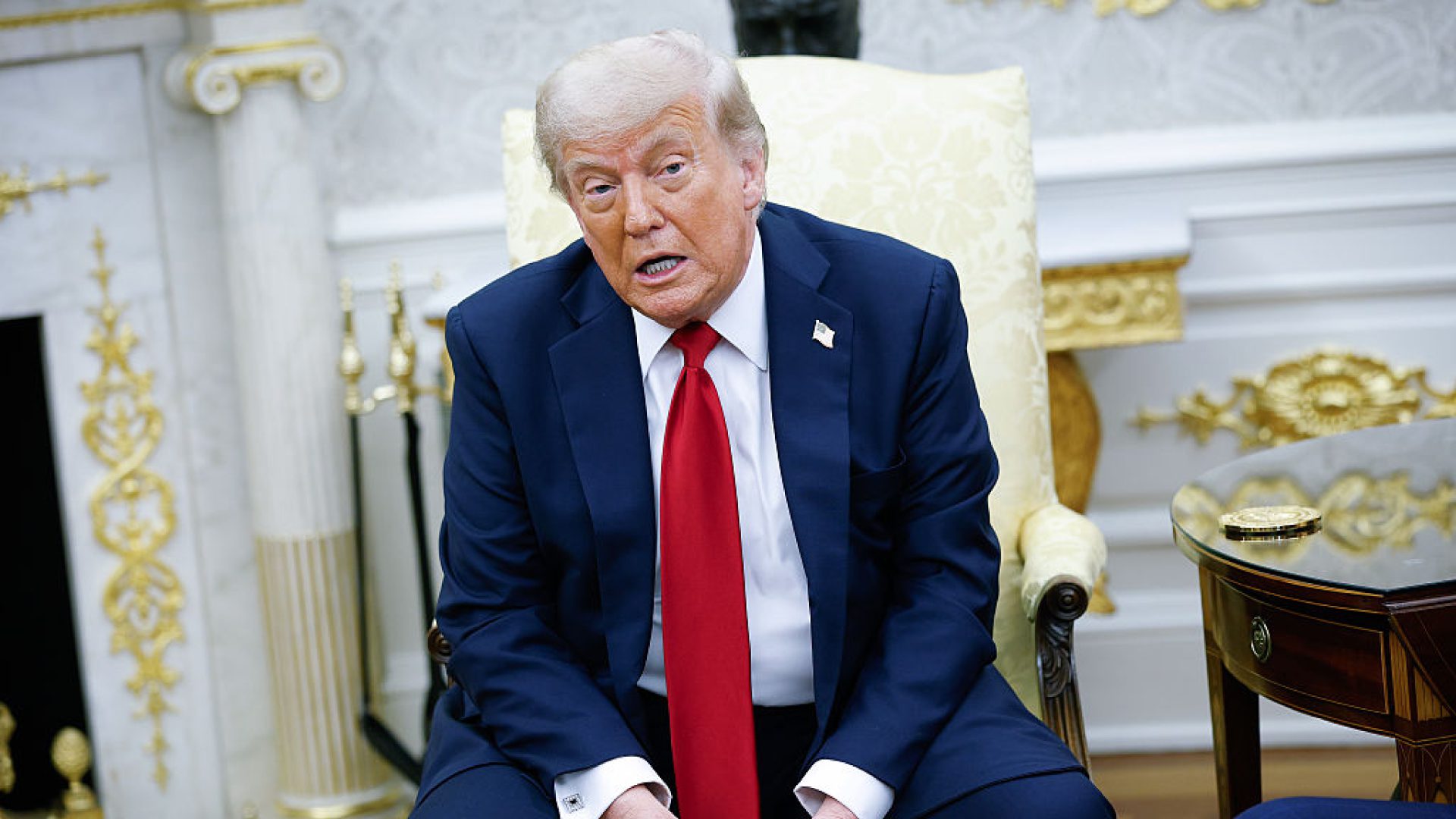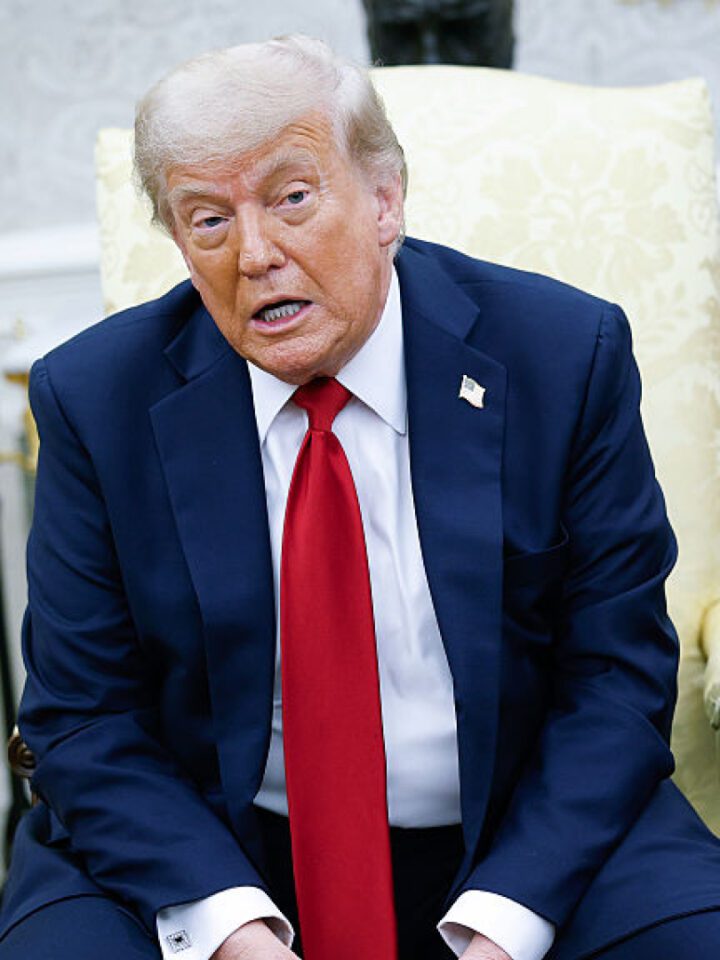US President Donald Trump’s 50-day deadline for Russia to reach a peace agreement with Ukraine is viewed in Moscow more as a window of opportunity than a genuine threat. The Kremlin intends to use this period to complete its summer military campaign on its own terms. The threat of 100 per cent tariffs on Russia and its trading partners has caused little concern: given the unpredictability and inconsistency of the current US administration, Moscow does not anticipate serious consequences.
50 days to try to break the stalemate
Donald Trump’s July 2025 statement during his meeting with NATO Secretary General Mark Rutte at the White House signalled a tougher stance on Russia. Trump threatened to impose 100 per cent tariffs on imports from Russia and any countries which continue to trade with it unless a ceasefire between Moscow and Kyiv is reached within 50 days. He also unveiled a new scheme for arms supplies to Ukraine, under which Ukraine’s European allies would purchase American weapons with their own funds and transfer them to Kyiv.
Moscow’s official response was restrained. The Kremlin spokesman Dmitry Peskov called the delivery of weapons ‘a signal for continued war’, while Foreign Minister Sergei Lavrov deflected responsibility from Trump, claiming the US president was acting under pressure from the EU and NATO. This interpretation may be an attempt to preserve a communication channel with Washington.
Overall, the Kremlin sees Trump’s ultimatum more as an opportunity than a threat. The 50-day window gives Russia time for intensified military action on the front line. In effect, the US has granted Moscow carte blanche to continue the war until early September without fear of additional sanctions.
Trump’s deadline likely reflected his phone conversation with Putin on 3 July. According to Axios, the Russian president informed Trump that Russia was planning a new offensive in Ukraine over the next 60 days, aiming to reach the borders of the four occupied regions. Trump may believe that Moscow will be more open to negotiations at the end of this period.
However, Russia’s capacity to escalate the war within the next six weeks is limited. A sharp increase in drone production (up to 5–6,000 units per month) and ongoing missile strikes on Ukraine have yet to yield a strategic breakthrough. Even with large-scale use of missiles and drones, it is unlikely that Russia can inflict a level of damage within the allotted timeframe that would persuade the Ukrainian leadership to accept Moscow’s peace terms.
Historical precedent suggests that air campaigns rarely have a decisive impact on a country’s will to continue fighting, as demonstrated by the resilience of both the British and German populations during the Second World War.
The battlefield situation indicates that Russia is far from capturing all of the territory which it claims to have annexed. None of the four frontline regions are fully under Russian control. While Luhansk Region is almost entirely occupied, Ukrainian forces still retain about 25 per cent of Donetsk Region, and 30 per cent each of Kherson and Zaporizhzhia Regions. Meanwhile, the Russian army lacks the manpower to capture a major city such as Zaporizhzhia.
Nevertheless, the Kremlin hopes to shift the situation in its favour as a result of the spring conscription campaign that is expected to generate up to 160,000 recruits. Some of these can be turned into contract soldiers who can fight in Ukraine. Putin has repeatedly said that conscripts are not being sent to the combat zone, even though this is legally possible if they have received at least four months training and have acquired a specific military skill. Additionally, the Kremlin is placing its hopes on potential internal instability in Ukraine and a gradual erosion of Western support.
It is worth noting that Trump’s 50-day deadline expires just as the Russian-Belarusian military exercise ‘Zapad-2025’ (West-2025) is set to begin in September. This exercise traditionally raises concern in the Baltic states, Poland, and the Nordic countries. For the Kremlin, ‘Zapad’ serves both as a deterrent and a means to pressure public opinion in Western countries.
Ultimately, Russia’s strategy continues to be shaped by its limited capabilities. Its bet on a ‘miracle solution’ – military or political – reflects more wishful thinking than realism. If, as seems likely, little changes on the battlefield by early September, the Kremlin may be forced to reconsider whether the time has come for genuine negotiations to end the war.
Sanctions as background noise
The proposed 100 per cent tariffs on purchasers of Russian exports would affect Russia’s key trading partners, chiefly India and China. However, there are strong grounds to believe that Trump is unlikely to implement these measures, especially given recent trade clashes with China. In spring 2025, a round of triple-digit tariffs between Washington and Beijing caused temporary market turmoil and ultimately ended in mutual concessions. Repeating this tactic against countries of the ‘Global South’ – now key trade partners for Russia – would carry high costs and risks for the US itself.
This helps to explain the muted market response to Trump’s announcement: the Moscow Exchange Index (IMOEX2) rose, and the rouble strengthened against major currencies. This optimism was likely driven by the postponement of the tariffs, which investors had expected to be introduced immediately.
In Moscow’s view, the threat of new sanctions is a US negotiating tactic rather than a serious prospect. In the current context, the Kremlin sees it not as a significant challenge but as a manageable and limited risk, one that is unlikely to fundamentally alter the domestic situation or Russia’s foreign policy course.



